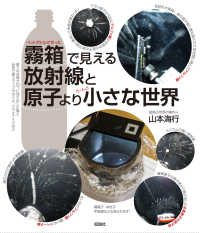- ホーム
- > 洋書
- > 英文書
- > Science / Mathematics
Full Description
Physics-Based Deformable Models presents a systematic physics-based framework for modeling rigid, articulated, and deformable objects, their interactions with the physical world, and the estimate of their shape and motion from visual data.








